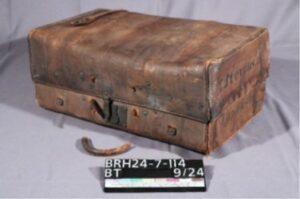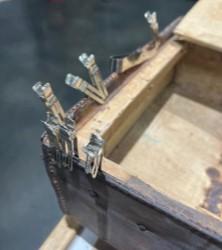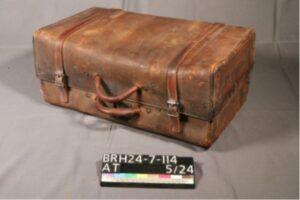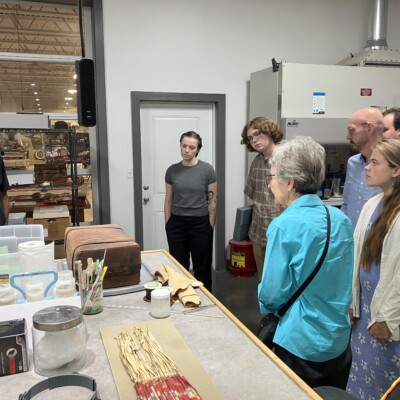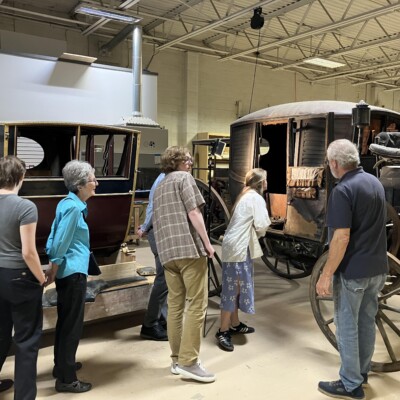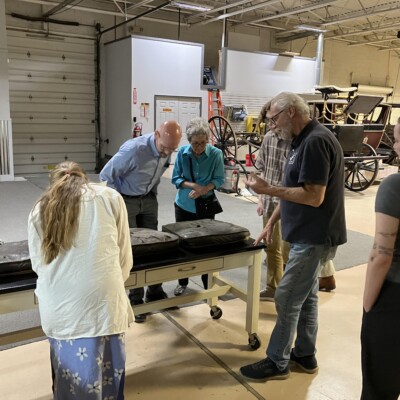Summer Interns Visit B. R. Howard Conservation
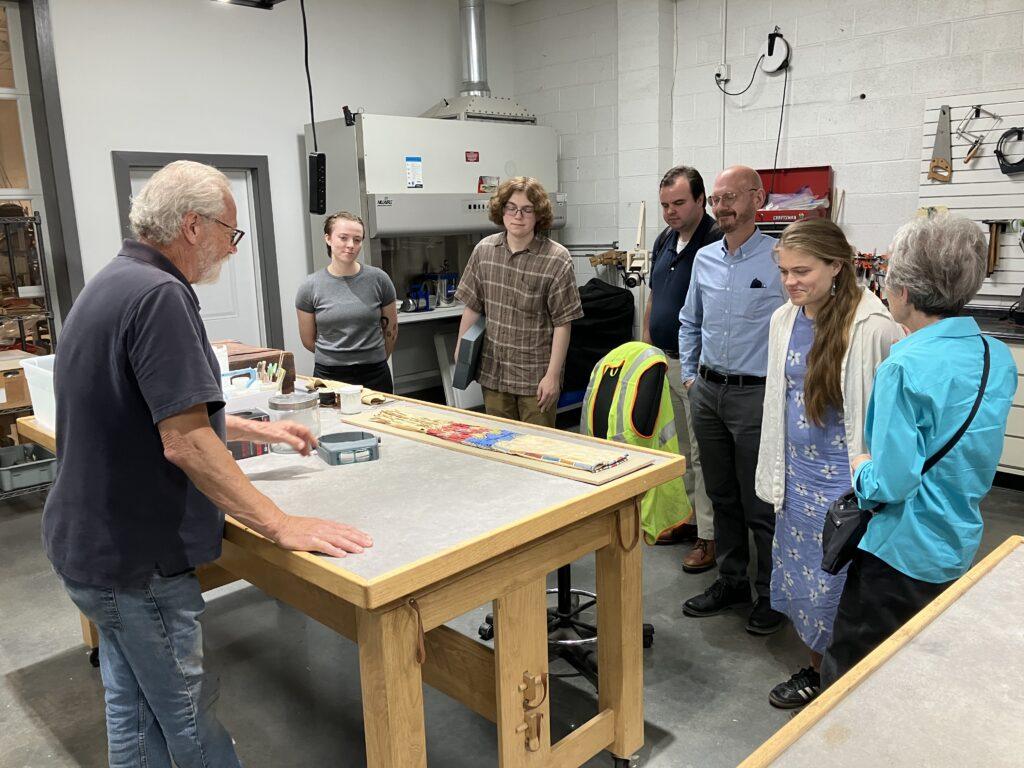
On July 22nd, a group of LancasterHistory summer interns, staff, and volunteers visited the museum conservation facility of B.R. Howard Conservation in Carlisle. Head conservator Brian Howard provided the group with a tour of his facility and insights into the work that goes into preserving cultural heritage objects for museums and historical organizations as well as private individuals for future generations. Brian and his team bring a broad range of backgrounds, experiences, and skills to the work of conservation that allow them to work on a wide variety of projects including sculpture, paper, paintings, textiles, leather, and any combination of these materials. They provide specialized treatment to stabilize objects, repair damage, or fabricate missing parts. As conservators, Brian and his team focus on maintaining the integrity of the piece’s history rather than making the object look brand new.
One of the goals of our summer internship program is to expose individuals with an interest in museums and public heritage to various aspects of museum work, including conservation. Our visit to B.R. Howard Conservation to pick up a leather valise that once belonged to Thaddeus Stevens provided us with an opportunity to visit a working conservation lab, to view work in progress, and — most importantly — to ask questions. The valise is slated to be placed on exhibit once the new Thaddeus Stevens & Lydia Hamilton Smith Center for History and Democracy is opened in 2026. Brian and his team gently cleaned the deteriorated leather surfaces, stabilized all torn leather panels using a reversible adhesive, stabilized all existing stitching, repaired and reattached an existing handle; replicated missing straps and buckles, and created a handle to match the existing handle. The final report included before, during and after treatment photographic documentation as well as a detailed description of products and materials used during the conservation process.
Our interns asked a lot of great questions and provided some interesting feedback on their visit. Here are a few of their comments:
- Nate Drenner: In a general sense I was aware that conversation involves painstaking care and attention to detail, but seeing Brian’s work up close drove home just how intricate a process it is. The interpretive part of the work also fascinates me. The hands-on work is so tied to questions of why an object is being conserved or restored, and what story it has to tell, that it seems like a true partnership with curation. The concept of “reversibility” was new to me. I can see why it would be important to be able to “undo” restoration work if the interpretive goals or research needs change.
- Amelia Kasdorf: It was interesting to see the behind-the-scenes of conservation and impressive to see the various types of artifacts that Brian conserves. It also showed me another side of the museum field that I didn’t know much about. I think working as a conservator would be an excellent job because it combines different disciplines and types of knowledge, and visiting the studio showed me how varied the work can be and how each day brings new challenges and problem-solving, so it wouldn’t get old. Seeing the 1700s carriage that Brian is conserving, as well as the process, care, and attention to detail required to handle and conserve such an artifact, was really cool.
- AJ Crowell: About the visit more broadly, it was really wonderful to see a conservation space and professional who wasn’t specialized in one kind of conservation or restoration field. I really appreciate that B. R. Howard is aware of the kind of financial and general stress the process of conservation is for many museums. Resisting the field’s push to specialize in one form and instead take on what projects B. R. Howard can support is a refreshing approach to the relationship between conservators and museums and also is a great way to work on so many interesting projects.
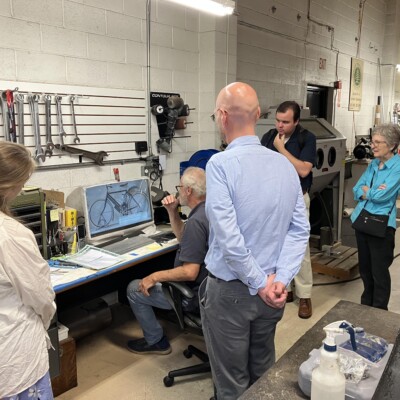
From Object Lessons

